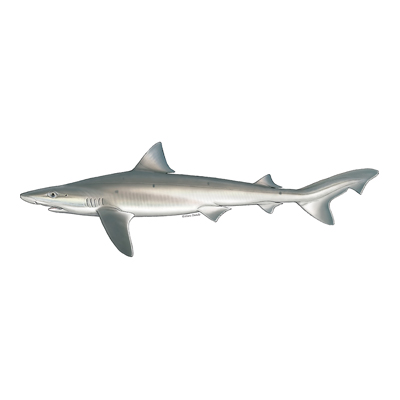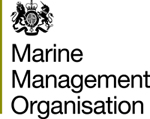

A slender, large shark related to smoothounds and spurdogs. Tope have a long snout and wide mouth and pronounced spiracles behind their small eyes.
In high demand and hunted around the world for their fins, Tope, also known as soupfin sharks, are becoming increasingly threatened. In European waters they are now protected and cannot be targeted but are occasionally legally caught as by-catch. Like all sharks they are slow growing and produce few offspring each year so are vulnerable to over fishing. Avoid eating this species and never eat shark fin soup.
In 2021, 10.5 tonnes of tope were landed to Cornish ports, with a value of £10.3k (MMO data).
Updated July 2023
Cornwall Good Seafood Guide rates fish on sustainability using a scale of 1 to 5.
1, 2 and 3 are recommended, Fish to avoid are rated 5.
We use the system devised by the Marine Conservation Society (MCS) so our scores are comparable with the scores produced by MCS for the UK and fisheries from all around the world. For more information on scoring click here.
Direct targeting of tope is prohibited in EU waters. Tope are protected by the tope prohibition of fishing order 2008. If tope are caught on rod and line they have to be returned to the sea alive and it is illegal to harm them. English commercial fishermen using other methods are legally permitted to retain 45kg live-weight of tope per day but direct targeting of tope is prohibited in EU waters. It is also illegal to land tope with the fins or head removed.
Tope are caught as accidental by-catch in gill nets, tangle nets and on baited longlines. They move around and have a random distribution which makes it difficult for netters to avoid them. They are caught as sport fish by anglers but must be promptly returned unharmed to the sea, with details recorded in the vessels log book.






Cornwall Good Seafood Guide is underpinned by the Marine Conservation Society (MCS) Good Fish Guide. The first UK consumer guide to sustainable seafood. For more information visit www.fishonline.org
Cornwall Good Seafood Guide is here to help us all make sustainable seafood choices. Choices that will help us keep the oceans healthy and Cornish fishers' futures safe. This website is funded by Cornwall Wildlife Trust. If you would like to make a meaningful difference to the health of our oceans, please consider making a donation to the Cornwall Wildlife Trust Ocean Emergency fund. Your donation will help safeguard these remarkable environments, ensuring that they continue to thrive for generations to come. Together, we can be stewards of the seas and champions for a healthier, more sustainable future.